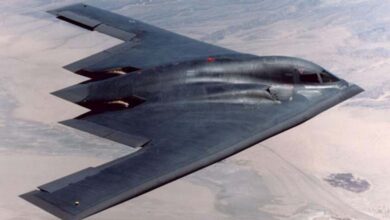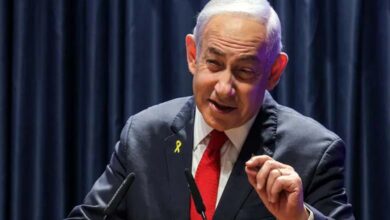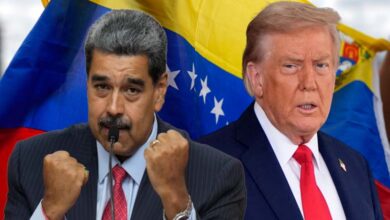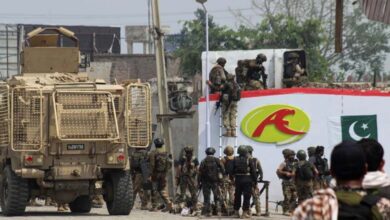Peace Amid Gunfire… Kashmir Shaken After India-Pakistan Ceasefire Declaration
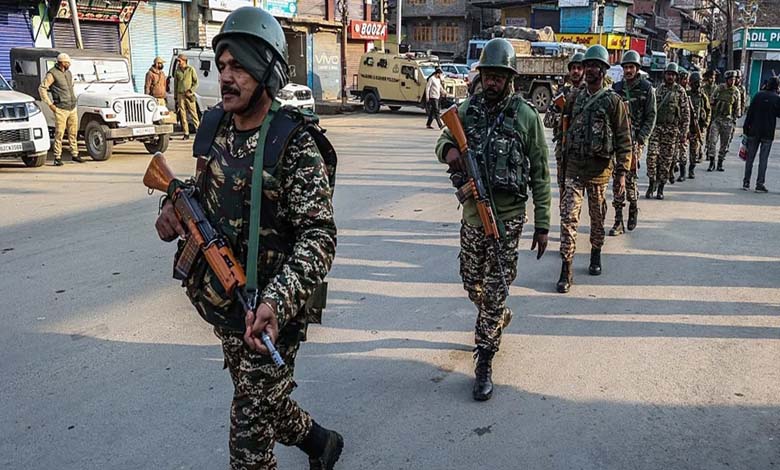
Just hours after the surprising announcement of a ceasefire agreement between India and Pakistan, mysterious explosions echoed in the skies over Kashmir, raising doubts about the durability of the accord between the two nuclear neighbors. From Jammu to Srinagar, the sounds of shelling and drones pierced the air, as if the land itself rejected sudden calm — or as if hidden forces had resolved not to let the seeds of peace sprout in a region soaked with conflict and historical tension.
-
India and Pakistan: Worst Escalation in Three Decades (Timeline)
-
India-Pakistan Escalation: China Offers Mediation.. US Secures Its Diplomatic Mission
The drone-detected attacks over Indian towns coincided with a reconciliatory tone from Pakistan and U.S. praise for the diplomacy that led to the agreement. Yet, the explosions quickly cast a shadow over what had seemed a promising development — for only a few hours — before the region’s fragile security reality dragged it back to square one. Was what happened in Kashmir an early test of an unproven agreement? Or is peace, once again, too fragile to take root in this contested land?
Fragile Silence Under Drone Wings
When U.S. President Donald Trump announced via his “Truth Social” platform that India and Pakistan had reached an immediate and complete ceasefire deal, the long-hostile region appeared to be on the cusp of a rare turning point.
-
Dozens Killed in Indian Airstrikes on Pakistan Amid Fears of All-Out War
-
Indian Army vs. Pakistani Army: Comprehensive Comparison of Military Power Between the Two Nuclear Neighbors
But the hours that followed quickly showed that Kashmir is not a place that can be quieted with a signature or a tweet.
Eyewitnesses in Jammu told Reuters they saw projectiles in the sky followed by loud explosions.
In another town within Indian-administered Kashmir, international media confirmed drone strikes — an unprecedented development in the nature of conflict within the disputed region.
Former Chief Minister of Jammu and Kashmir, Omar Abdullah, pointed out that explosions were heard in various parts of Srinagar, the capital of the Indian-controlled territory, hinting that the attacks may have targeted urban areas, not just border zones.
-
Will a Nuclear War Break Out with India? Pakistan’s Defense Minister Gives a Decisive Answer
-
The Relationship Between Al-Jama’ah Al-Islamiyah in Bangladesh and the Muslim Brotherhood is Extremely Strong: How?
Ceasefire Declaration… Beneath Gunfire
The ceasefire announcement came as a result of U.S. mediation led by President Trump — a diplomatic initiative credited to him internationally, especially amid the failure of peace efforts in other global conflict zones.
Trump’s statement was enthusiastic: he praised the decision by New Delhi and Islamabad as “a great use of common sense and high intelligence.”
-
The UAE announces Nawaz Sharif’s victory in the Pakistani elections
-
The backstage of the Comoros’ classification of the Muslim Brotherhood and the Houthis as terrorist entities
But on the ground, the situation was far more complex. Despite Pakistani Prime Minister Shehbaz Sharif welcoming the deal as a “fresh start to the path of peace,” and his government remaining silent about the explosions, that silence was not enough to reassure New Delhi.
Pakistani Foreign Minister Ishaq Dar also emphasized that Pakistan was committed to regional security without compromising its sovereignty — signaling a long-term diplomatic engagement.
Still, the calm envisioned by the agreement was quickly shaken, raising fresh questions about who benefits from derailing the peace process.
-
Washington doubts the seriousness of forming a naval alliance comprising Iran and Gulf states
-
Afghan earthquake: At least 1,000 people killed and 1,500 injured
Political Peace or Strategic Move?
Looming in the background are issues larger than mere crossfire — notably, the Indus Waters Treaty, from which India recently withdrew in protest of a deadly attack on tourists in Kashmir.
Despite the ceasefire, four government sources told Reuters that the agreement did not cover this vital issue, which has governed water sharing between the two nations since 1960.
This legal void is as dangerous as flying shells. In South Asia, water is not just a natural resource — it is a potential trigger for conflict, especially with climate change and growing dependency on shared water sources.
-
Anger at India over comments by a senior official deemed “Islamophobic”
-
What Are the Implications of Lifting the Ban on Jamaa Islamiya in Bangladesh?
Who Controls the Sky?
The drone attacks reported in Jammu and Srinagar point to an evolution in warfare tools.
No party has claimed responsibility, nor has the origin of the drones been confirmed — leaving room for speculation. Were these retaliatory strikes by non-state actors? Or a message from internal or regional factions dissatisfied with the new diplomatic path?
In a region accustomed to proxy wars, it is not far-fetched to assume that some forces see stability as a threat to their interests — particularly with hardliners in both countries thriving in an atmosphere of tension and resisting any thaw that might reduce their influence.
-
Linked to the Muslim Brotherhood: What Do You Know About Al-Jama’a al-Islamiyya in Bangladesh?
-
“Daesh Khorasan” Emerges in Afghanistan
America’s Gamble on the Line
Political science and international relations professor Dr. Mohammed El-Monji said that from Washington’s perspective, the agreement was a long-awaited diplomatic success — now put to the test.
He added that renewed instability in Kashmir could become another major headache for U.S. foreign policy, potentially undermining Trump’s efforts to present himself as a “peace broker” both in the East and the West.








